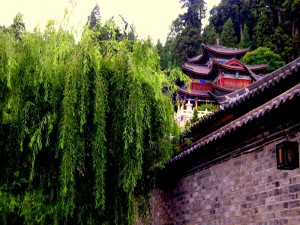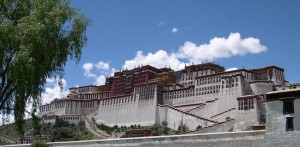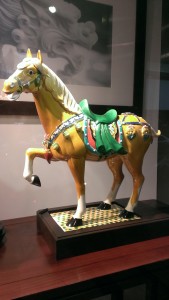Chinese Word Sounds
In Western phonetic languages, there is an unlimited set of word-sounds, based on new, different or unusual combinations of letters that can be used to create new words.
‘Neologism’ is a word currently in vogue in English, because of the need to coin so many new words for new meanings in this modern computer and Internet age.
The Chinese language is different in that it contains a pre-defined and limited set of 402 different word-sounds that comprise the entire range of word-sounds of the language. (See Appendix A for a complete Pinyin alphabetical listing of the 402 word-sounds).
A Language Filled With Homophones
The result is that Chinese is a language that contains many, many homophones (words that have the same pronunciation, but different meanings). In fact, it is not unusual in Chinese to hear the same word-sound repeated in sentences, with different meanings.
Beginning students will often be challenged by their teachers to correctly pronounce some famous Chinese tongue-twisters based on this fact, such as the (relatively simple) phrase ’44 stone lions’. In Chinese this translates to:
In Pinyin: sìshí sì shí shī zi
In Traditional Chinese characters: 四十四石獅子
In Simplified Chinese characters: 四十四石狮子
sìshí sì = 44 [四十四]; shí = stone [石]; shī zi = lion [獅子/狮子]
A brief look at any Chinese-English dictionary’s pronunciation index will show that each word-sound is represented by many Chinese characters and contains many meanings which depend on both context and use.
 A Chinese building in the heights above Lìjiāng in Yúnnán.
A Chinese building in the heights above Lìjiāng in Yúnnán.
It should be noted that this repetition of similar or the same word-sounds might seem to make the language totally incomprehensible …but it actually doesn’t.
First, the repetition of sounds is not so frequent as might seem by the tongue-twister example, and second, when the sounds do repeat, they do so in a context …and it is the context that renders the word-sounds comprehensible. Remember that Chinese is a highly context-dependent language: more so than we are used to in English and other phonetic languages.
Neologisms in Chinese Through the Ages
New words in Chinese have historically been created in a number of ways, differently than in phonetic languages.
As new ideas or meanings came into the language, either the new idea/meaning was associated with an existing character, (that is, an additional meaning was added to the existing character), or a new character (or an elaboration of an existing character) was added to the character set for the new word/meaning.
This was true during the first few thousand years of Chinese language development, (in Ancient and Classical Chinese,) when the language primarily depended on single-character words.
Modern Chinese and Two-Character Words
Modern Chinese is different from its ancestral forbears in that it uses two-character combinations as words about 80% of the time — that is, most modern Chinese words consist of two characters.
The other 20% are either single-character words or 3-or-more character word-phrases.
The use of two-character words actually makes the language easier to learn, as the characters are learned by association, and the second occurrence of a character will remind the learner of the first word learned using the character, giving the learner the ability to build vocabulary with each new use of the character.
Chinese characters may have one or more meanings, some have many meanings and grammatical uses. Additionally, many characters also are synonyms of other characters.
This being the case, the combination of two characters as discrete words allows the second character in a two-character word to reinforce the ‘native’ or intended meaning, where the second-occurring character has a meaning that is the same as or very similar to the meaning of the first-occurring character.
This also allows meaning differentiation, expansion or change, where the second-occurring character has a different meaning than the first character in two-character combinations and is intended to modify the first character’s meaning.
The above-described process does not detract from the organic development model of language as a method of communication based upon the use-patterns of populations.
No language develops specifically based upon a set of rules or ideas (with the possible exception of Esperanto, which, of course, has no native speakers.) Even French, which has a ‘supreme language authority,’ (the Académie Française) still develops through the use-patterns of the French people, regardless how much the the Académie might object to some of the words used by the population (which in contemporary times often now come from English).
All languages develop to some degree based on collocations that first appear in common speech, and that then slowly percolate through a population going from being a localism, to becoming a regional speech pattern, and then finally entering the language as a recognized part of the vocabulary. Needless to say, much of modern Chinese doubtlessly originated as local speech, and over time progressed to becoming ‘standard’ speech in just such a manner.
Home Back Top of Page Next Page
© R. Teller, 2015
 The Potala in Lhasa, Tibet
The Potala in Lhasa, Tibet Táng Dynasty horse statue illustrating the Ferghana Valley horses secured from Central Asia during the Hàn Dynasty to fight the Xiōngnú.
Táng Dynasty horse statue illustrating the Ferghana Valley horses secured from Central Asia during the Hàn Dynasty to fight the Xiōngnú.
